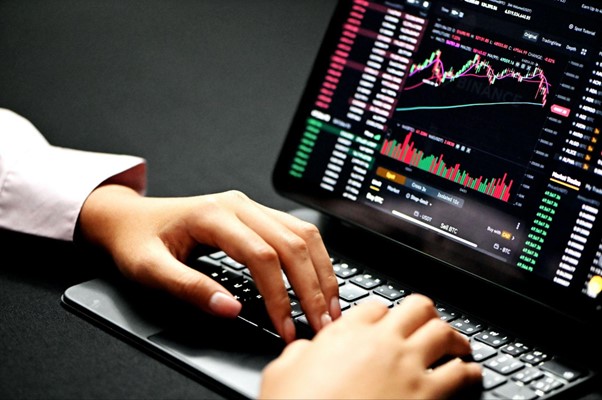In today’s digital age, online trading has become an accessible way for individuals to engage in financial markets. Whether you’re looking to trade stocks, commodities, or cryptocurrencies, online trading provides the tools to buy and sell assets from the comfort of your home. But if you’re new to trading, the process can seem intimidating. Don’t worry—this guide will walk you through the essentials of how to trade online and how to choose the best platform for your needs.
What Is Online Trading?
Online trading involves buying and selling financial assets through a brokerage or trading platform, typically via the internet. Traders use these platforms to access various financial markets and execute trades in real time.
Step 1: Choose Your Market
Before you begin trading, it’s essential to decide which market you want to trade in. There are several popular types of markets, including:
- Stock Markets: Buy and sell shares of publicly listed companies (e.g., Apple, Google).
- Forex Market (FX): Trade different currencies against each other (e.g., USD vs EUR).
- Commodities: Trade physical goods such as gold, oil, or agricultural products.
- Cryptocurrencies: Trade digital currencies like Bitcoin, Ethereum, and others.
Each market requires a different level of knowledge and strategy, so it’s best to focus on one initially before diversifying.
Step 2: Learn the Basics
Before diving into trades, take some time to learn the basics of trading. Familiarize yourself with key concepts like:
- Bid and Ask Prices: The bid is the price buyers are willing to pay, and the ask is the price sellers want.
- Spread: The difference between the bid and ask price.
- Leverage: The ability to control a large position with a small amount of capital.
- Order Types: Market orders (buy/sell immediately at the current price) vs limit orders (set your desired price).
- Risk Management: Implement stop-loss orders to minimize potential losses.
There are plenty of online resources, including blogs, videos, and courses, that can help you get up to speed.
Step 3: Open a Trading Account
Once you’ve decided on your market and learned the basics, you’ll need to open a trading account with a broker or online trading platform. Brokers act as intermediaries between you and the financial markets, facilitating trades.
Step 4: Choose a Trading Platform
When choosing a platform, it’s important to consider factors like user interface, fees, and the range of assets available. Here are a few of the most popular platforms for online trading:
1. eToro
- Best For: Beginners and social traders.
- Features: Easy-to-use interface, copy trading feature, and access to stocks, forex, and crypto.
- Fees: Commission-free for stocks; spreads and overnight fees for other assets.
2. TD Ameritrade
- Best For: U.S.-based traders looking for a variety of investment options.
- Features: Extensive research tools, educational resources, and robust trading platform (thinkorswim).
- Fees: No commission on U.S. stocks, ETFs, and options.
3. Robinhood
- Best For: Casual traders who prefer no commissions.
- Features: Commission-free trades on stocks, ETFs, and options; simple mobile app.
- Fees: No commission on stocks; fees for margin trading and cryptocurrency.
4. Coinbase
- Best For: Cryptocurrency traders.
- Features: User-friendly interface, extensive crypto market, and educational resources.
- Fees: Higher fees compared to other platforms, especially on smaller trades.
5. Interactive Brokers
- Best For: Experienced traders with access to global markets.
- Features: Advanced trading tools, low commissions, and access to a wide range of financial instruments.
- Fees: Low commissions on stocks and ETFs; slightly higher for options and international trading.
Step 5: Start Trading
Once you’ve chosen a platform and set up your account, you can begin trading. Many platforms offer demo accounts, where you can practice trading with virtual money before committing real funds.
Here’s what you’ll need to do to make your first trade:
- Deposit Funds: Transfer money into your trading account using a bank transfer, credit card, or other accepted payment methods.
- Place Your First Order: Select the asset you want to trade, choose your order type (market or limit), and decide how much to invest.
- Monitor Your Trades: Keep track of your trades and be prepared to make adjustments if the market moves against you.
Step 6: Continue Learning and Improve Your Skills
The financial markets are always changing, and it’s important to stay informed and continuously improve your trading skills. Follow market news, analyze trends, and adjust your strategy based on experience and new insights.
Final Thoughts: Which Platform is Best for You?
The best platform for online trading depends on your individual goals, preferences, and level of experience. If you’re new to trading, look for a platform with educational resources and a user-friendly interface like eToro or Robinhood. For those with more experience, Interactive Brokers or TD Ameritrade may be better suited with advanced tools and global market access.
Remember that trading involves risk, and you should only trade with money you can afford to lose. Start small, be patient, and over time you’ll learn to navigate the world of online trading.






















+ There are no comments
Add yours